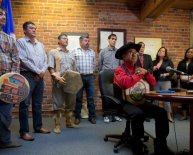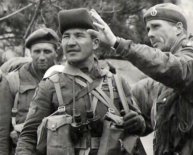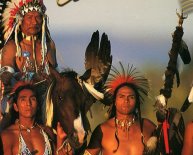![[Click to enlarge Figure 6-2]](http://batteryoperatedbookblog.com//img/diabetes_in_canada_facts_and_figures.jpg)
Canadian First Nations groups
The Assembly of very first countries (AFN) is a national advocacy company representing initially country residents in Canada, including over 900, 000 people surviving in 634 First Nation communities and in towns and cities and cities nationwide.
Very first Nation leaders (Chiefs) everywhere to shore direct the work of AFN through resolutions passed away at Chiefs Assemblies presented twice a-year.
The AFN nationwide Executive comprises of the nationwide Chief, 10 local Chiefs therefore the seats of this Elders, Women’s and Youth councils. Regional Chiefs are chosen every three-years by Chiefs within their regions. Chiefs, that elected by the citizens and members of their particular particular communities, elect the National Chief every three-years.
The role of National Chief plus the AFN will be advocate on the part of very first Nations as instructed by Chiefs-in-Assembly. This includes facilitation and control of nationwide and local conversations and dialogue, advocacy attempts and campaigns, appropriate and plan analysis, communicating with governing bodies, including facilitating relationship creating between very first Nations while the Crown also public and exclusive areas and average man or woman.
Very First Countries
The term “First countries” describes certainly one of three distinct groups named “Aboriginal” in Constitution Act of 1982. Another two distinct groups characterized as “Aboriginal” will be the Métis while the Inuit.
You will find 634 very first country communities (also known as reserves) in Canada, with very first country governing bodies. First Nations are part of special bigger linguistic and social teams that differ across the country. In reality, there are over 50 distinct countries and language groups across the country.
First countries have actually a unique and unique commitment because of the Crown while the individuals of Canada because set-out in Royal Proclamation of 1763 and manifested in Treaties, the Constitution Acts of 1867 and 1982, Canadian common law and Global legislation and as outlined into the un Declaration on the Rights of Indigenous Peoples.
This unique commitment between First Nations and also the Crown is grounded in First country inherent and Aboriginal rights and name, Treaties and negotiated agreements with a view toward peaceful coexistence, mutual value, recognition as well as the equitable sharing of places and sources. Numerous Treaties, reflected in written papers, wampum and oral comprehension, were registered into between very first Nations therefore the Uk Crown (the Government of Canada after Confederation) between 1701 and 1923. Treaty promises and agreements included non-interference, protection of searching and fishing liberties, sharing of places and sources, health and training benefits, economic tools and benefits during the Treaty relationship.

















